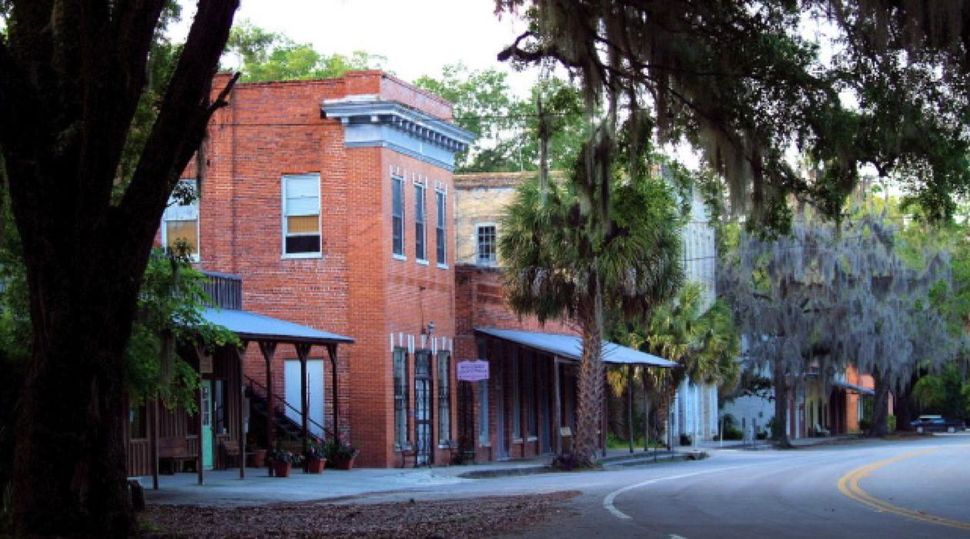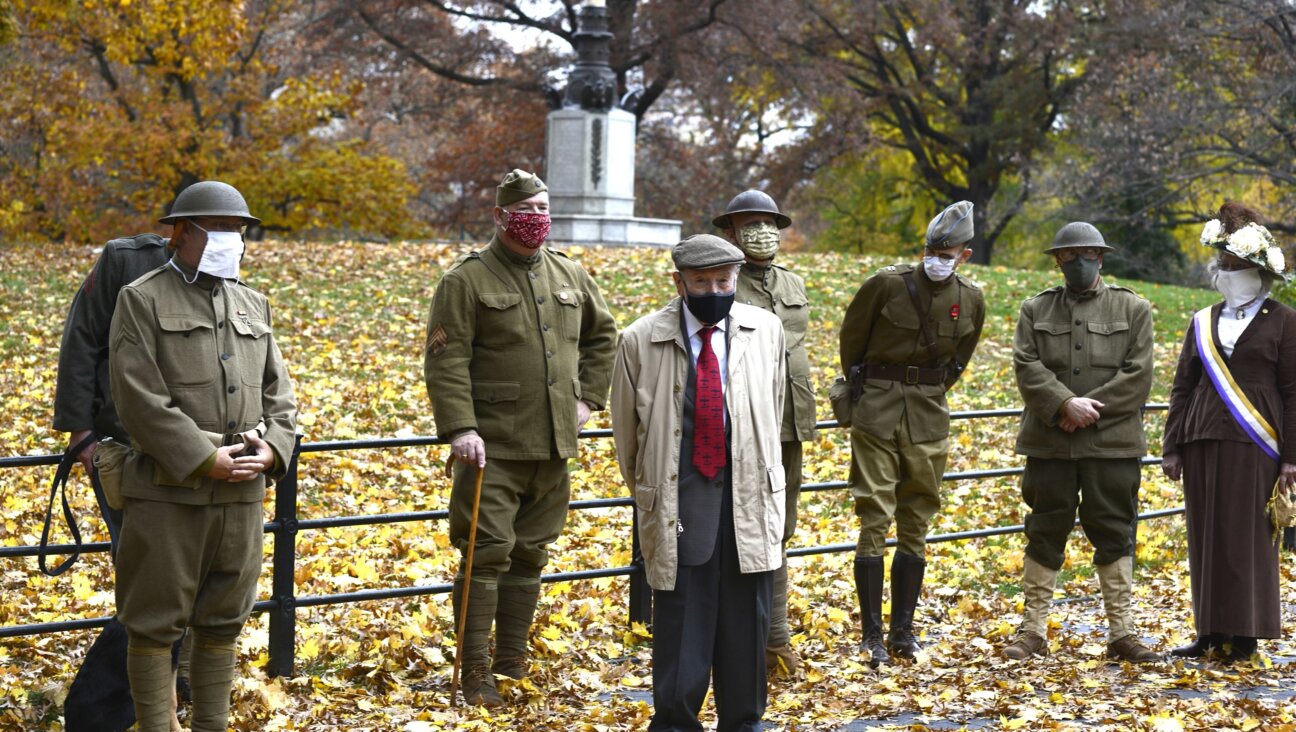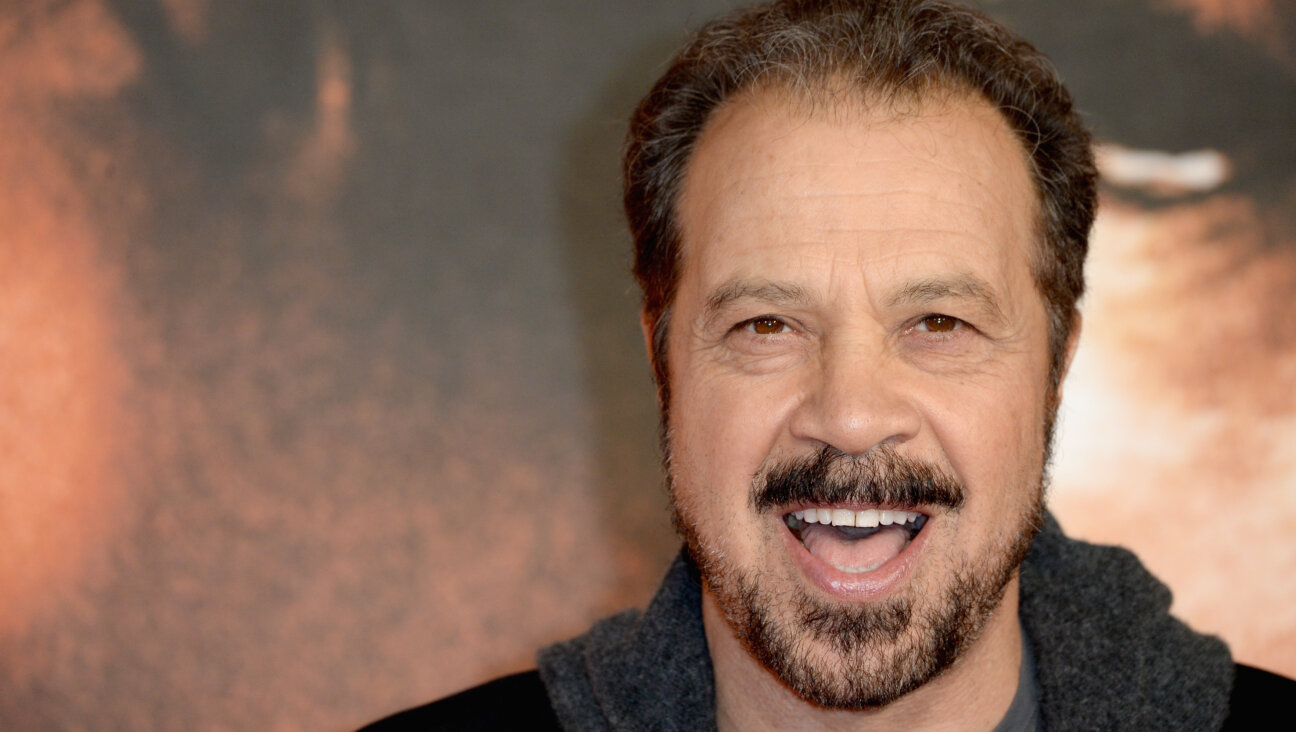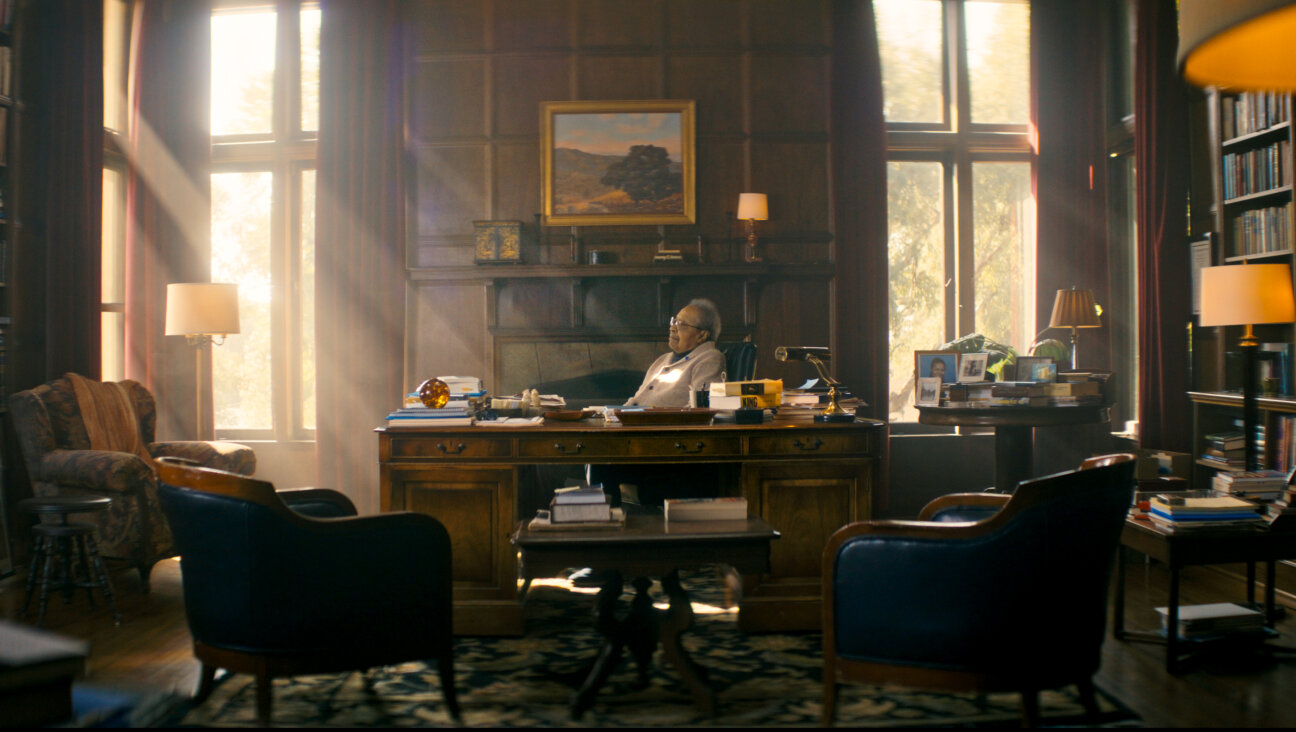The Small Florida Town That Could Have Been a Jewish Utopia

Lost Horizon? In 1821, a Moroccan businessman named Moses Levy tried to create a utopian refuge for Europe’s persecuted Jews in Micanopy, Florida. Image by Courtesy of Brian Zimmerman

Image by Kurt Hoffman
Judging by the numbers, Micanopy, Florida, is a small town. Its population is just 609. According to its website, the town has three restaurants, two real estate offices, and one horse and carriage rental service. The closest Starbucks is 12 miles away, but tourists looking for an antique shop are in luck. Micanopy has 13 within its one-square-mile area. And what Micanopy lacks in retail stores and fine dining, it more than makes up for in obscure Jewish history. Unbeknownst to most, the city was the site of an early Jewish homeland, nearly 80 years before the State of Israel was even a thought.
It started in 1821 when a wealthy Moroccan businessman named Moses E. Levy tried to create a utopian refuge for Europe’s persecuted Jews in Micanopy’s untamed wilderness in north central Florida. Over the centuries, the story of Levy’s Micanopy experiment has been relegated to the margins of Jewish history. But new efforts have been shining a light on Levy’s legacy.
In a 2005 book, “Moses Levy of Florida: Jewish Utopian and Antebellum Reformer,” Dr. Chris Monaco, a Micanopy-based independent scholar, argued that Levy’s vision of a Jewish safe haven was a revolutionary event in the history of American Judaism: It was the first Jewish communitarian settlement on United States soil.
So far, Monaco’s most receptive audience has been the people of Micanopy, where he has been living with his wife since 1996.
In other parts of north central Florida, when people use the word pride they are most likely referring to a person’s allegiance to the local college football team, the Florida Gators. In Micanopy, however, residents have found something else to be proud of.
“We take our history very seriously,” says Stuart Smith, 71, a Brooklyn transplant who moved to Micanopy four years ago. “You have to get permission from the [Micanopy Zoning] Board to trim a tree, tile a house. The history of this city is sacred.”
The United States government agrees. The city boasts 38 buildings on the National Register of Historic Places.
Delectable Collectibles, an antique shop housed in an early 20th-century bank, is one of those buildings. It is owned by Monica Fowler, 66, who moved to the area from New York 35 years ago. Along with Smith, she is a member of Micanopy’s small Jewish community (“We don’t have enough to make a minyan,” Smith says), and she believes Micanopy is special for its attachment to the past.
“Micanopy is one of the most original and nostalgic cities left,” says Fowler, “especially in Florida, with all of its growth and development.”
People coming to Micanopy for the first time are often struck by its time capsule quality. In Florida, where new shopping plazas sprout as regularly as crabgrass weeds, many find it reassuring to know that some towns value ecological growth over the economic kind.
“When visitors turn off the main drag and come down our street, the first thing they say is ‘My gosh, look at these trees,’” says Smith. “We have lots of oak trees, magnolia trees, huge sycamore trees. In the fall, they shed leaves the size of dinner plates.”
For almost four centuries, Micanopy’s beautiful landscape has served as a backdrop to Florida’s most historically significant occasions. In 1539, the city witnessed an early encounter between Spanish conquistador Hernando De Soto and a tribe of Timucua Indians. In 1774, Pennsylvania botanist William Bartram arrived in the area to document native wildlife, and described in his journal a run-in with a “smoke-breathing, dragon-like animal with a horrifying roar.” He was referring to an American alligator.
More recently, in 1990, Micanopy starred in the film “Doc Hollywood,” featuring Michael J. Fox as a Los Angeles surgeon turned rural on-call doctor.
Despite the plethora of historical milestones, however, few locals have ever heard of Moses E. Levy — not even the Jewish ones.
“We often think of ourselves as living so far from any Jewish history and so isolated in terms of Jewish community,” said Rabbi David Kaiman, of Congregation B’nai Israel in nearby Gainesville. “What Chris Monaco’s book helped me realize was that we had a longer history than anyone had imagined. And that history started with Moses E. Levy.”
Moses Elias Levy was born in Morocco in 1782 to a Sephardic family. After the 1790 death of sultan Sidi Muhammad, which ushered in a period of fierce anti-Semitism for the Muslim-ruled country, Levy’s father smuggled his family to Gibraltar, and later to the West Indies, where the family became wealthy in the lumber exporting business.
Entries from Levy’s journal suggest that he regarded his newfound prosperity with contempt.
“His success became a moral burden,” wrote Monaco, “a potential source of sin that he dealt with in a righteous manner. Toward the end of his West Indian merchant career, he feared that he was in danger of becoming what he most despised: a ‘mere money-making animal.’”
Levy’s soul-searching led him to a life of religious observance, and though he was completely isolated from any Jewish communities, he rigorously kept the Sabbath and read from the Torah every day. As it happened, Levy’s return to religion coincided perfectly with a dark period for European Jewry.
In 1814, Napoleon Bonaparte’s troops withdrew from Germany, initiating a resurgence of German nationalism and anti-Semitism. Jewish communities were tortured and unfairly taxed, and violent riots erupted across the country. Bearing witness to the plight of his fellow Jews, Levy devised a way to offer them refuge, and set his sights on the United States.
“Levy believed the United States, like Noah’s Mount Ararat, would serve as the final destination for his oppressed brethren and that a new era of agrarian prosperity would emerge to fulfill God’s plan,” wrote Monaco. “Any possibility of returning to Israel appeared closed, so the United States, with its religious freedom and its separation of church and state, was ‘the only place that [Jews] can look for an asylum.’”
In 1816, during a trip to London to secure funding for his settlement, Levy met Frederick Warburg, son of a wealthy German banking family. The two became business partners, and with Warburg’s backing, Levy set sail for America.
The year was 1821, and Florida had just been ceded to the United States by Spain through the Florida Purchase Treaty. In the heart of the state, Micanopy stood as a hub of early settler activity, connecting traders on the Suwannee River to the west with the ports of St. Augustine to the east.
Here, on the grassy prairie lands amidst the sage brush and wilting oak trees, Levy arrived with the goal of building his Jewish homeland. He could not have picked a better site for a community founded on the desire to appease religious suffering.
To finance Pilgrimage Plantation, Levy invested in a sugarcane mill and blacksmith shop, as well as a wide array of agricultural equipment and livestock, including horses, sheep, oxen and hogs. Then, all Levy needed was residents. Those came as early as 1822, when Warburg arrived in Florida with 23 Jewish settlers, all of whom had answered an advertisement in a New York City newspaper sponsored by the Florida Association of New York, a real estate company.
Diary entries from this period describe the settlement as comprising “a range of tenements” in which Levy and his early residents lived in comfortable modesty. It didn’t take long, however, for Pilgrimage Plantation to become ensnared in setbacks.
After Levy and his band of settlers moved in, their presence led to suspicion. The sudden influx of colonists greatly agitated the Native Americans throughout the region. It also drew the ire of Horatio Dexter, an Anglo-Spanish Indian mercantile salesman with a trade monopoly in Micanopy.
In a strikingly cinematic moment, Horatio Dexter, along with a group of a dozen Native Americans, entered Levy’s plantation and threatened to burn it down. Fortunately, this crisis was avoided when Levy offered up his barrels of rum in exchange for temporary peace.
The complications didn’t end there. In 1823, the Florida Association of New York, to whom Levy had sold a portion of his land grant, decreed that his ownership over the property would be voided if he failed to get 200 people to occupy the plantation in the next three years. Desperate to keep his settlement alive, Levy petitioned Warburg to bring another contingent of settlers from Europe. Warburg succeeded, enticing another 25 Jewish families, most of them street peddlers and stockbrokers from Eastern Europe, to relocate to Pilgrimage Plantation. The settlement lived to see another year.
It was by no means an easy one. In 1824, during an attempt to sell parcels of his land to generate revenue, Levy was questioned about the legality of his land titles. Some Florida politicians accused him of purchasing the land for his settlement before Florida officially became a state. Fearing legal repercussions, his northern backers revoked their funding.
Levy spent the next half-decade abroad attempting to renew support for his settlement from global financiers. While he was away, Pilgrimage Plantation limped on. But not for long. In 1835, during the Second Seminole War, the settlement stood in the direct line of fire between warring Native American tribes and United States Army troops, and was burned to the ground.
In the aftermath of the fire, Levy considered his plantation a failure. But Monaco sees it differently.
“In actuality, although Levy was never cognizant of its significance, he managed to form the first Jewish farming settlement in the United States, albeit on a drastically reduced scale,” wrote Monaco. “Levy’s philanthropic gesture was an innovative response to centuries of Old World repression. Considering his many misfortunes, it was a true wonder that Pilgrimage existed at all.”
Levy died in 1854, leaving behind two sons. The eldest, Elias Levy, was a doctor at Harvard. The youngest, David Levy Yulee, would become the nation’s first Jewish senator. Both would later reject their Jewish heritage, sweeping their father’s life even further into the shadows.
Today, Pilgrimage Plantation has all but vanished from Micanopy’s historical records. The land where Pilgrimage Plantation once stood is owned by an individual who has not been cooperative about allowing archaeologists to dig on his property.
“He won’t return my calls,” Monaco told me.
Other efforts to reclaim Levy’s legacy have been slow. Rabbi David Kaiman once tried to organize a philanthropic group to raise money for a commemorative plaque on the grounds of Levy’s settlement.
“Chris was kind of enough to send me a map of where the plantation was.” said Kaiman. “There’s just nothing there, nothing there at all. And I don’t think people are motivated to put up a marker where there’s nothing there. Maybe it’ll happen in the next 10 years, after we raise some money, but not now.”
Meanwhile, Monaco has been working with the Micanopy Historical Society to curate an exhibit about the Second Seminole War, part of which will include information about Levy, but it’s been a difficult process. The exact geographic location of Pilgrimage Plantation is unknown, and Levy’s biography exists only in piecemeal journal entries and legal documents.
“There aren’t any artifacts,” said a representative of the Micanopy Historical Society told me. “You can’t have a Moses E. Levy exhibit without anything to exhibit.”
For now, Levy’s legacy will have to live on in other ways; the shape of his legacy continues to evolve.
“Being from Brooklyn, I thought I had a strong sense of the Jewish tradition,” said Stuart Smith. “I knew about Albert Einstein and Jonas Salk. I knew about Jewish artists and musicians. But who ever heard of a Jewish explorer? Well, that’s what Levy was!”
Monica Fowler likens Levy’s mission to the concept of tikkun olam.
“It is with such pride that I talk about Moses Levy,” says Fowler. “He wanted this community for post-Napoleonic Jewish refugees that were persecuted, long before Nazi Germany, long before Israel. I’m sure it wasn’t easy being a Jew in the early 19th century, and a Jew with such revolutionary ideas!”
Today, with the establishment of the University of Florida, the area continues to be a hotbed of progressive thought and scientific research. Levy aimed to bring European Jews to the swamps of northern Florida, and the university boasts one of the largest Jewish student bodies of any public institution, and is home to the 100,000-volume Isser and Rae Price Library of Judaica.
Still, Monaco hopes for the day when the story of Moses E. Levy lives on in more than just research papers and books. He says he remains confident that the people of Micanopy will rally around his efforts to commemorate the man whom he considered one of the most brilliant minds in modern Jewish politics.
“People are always coming into my shop and asking me, ‘How did this town come to be?’” said Monica Fowler. “I used to tell them about the trading post, about the Spanish conquistadors, about the Second Seminole War. Now, I tell them, ‘Well, there was this man named Moses E. Levy.’”
Brian Zimmerman is a freelance writer based in Chicago.
















